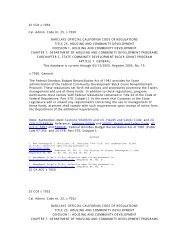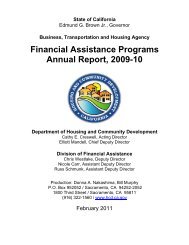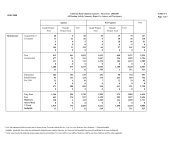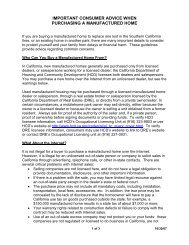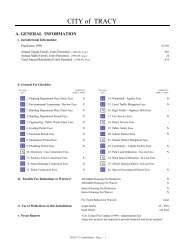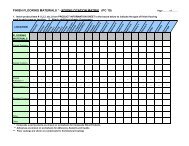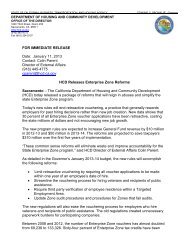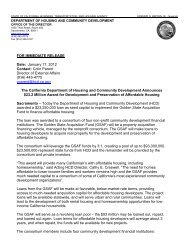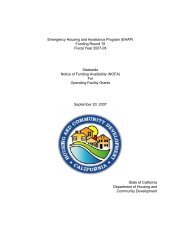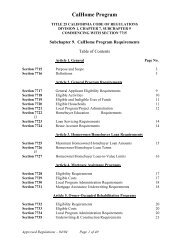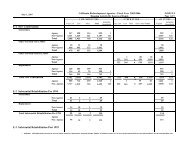Annual Report Annual Report - California Department of Housing ...
Annual Report Annual Report - California Department of Housing ...
Annual Report Annual Report - California Department of Housing ...
You also want an ePaper? Increase the reach of your titles
YUMPU automatically turns print PDFs into web optimized ePapers that Google loves.
Among the Act’s numerous provisions is the Neighborhood Stabilization Program which,<br />
among other things, will provide $3.92 billion in Community Development Block Grant<br />
(CDBG) funds to state and local governments to purchase abandoned and foreclosed<br />
homes and residential property. This money will rejuvenate neighborhoods and<br />
communities that are hardest hit by the foreclosure crisis. Consistent with the existing<br />
programs administered by HCD and local governments, this funding allows localities to<br />
renovate and rehabilitate those homes, eliminating blight and reinvigorating and<br />
stabilizing the affected neighborhoods.<br />
Of the over $529 million to be received by <strong>California</strong>, HCD will allocate $145 million to<br />
jurisdictions throughout the state; the other $385 million will be distributed to cities and<br />
counties by the federal government. The sustantial amendment to the Action Plan will<br />
be completed by December 1, 2008, with the NOFA and application to follow shortly.<br />
Awards are anticipated in early Spring 2009.<br />
Bond Accountability Website<br />
In January, 2007, Governor Schwarzenegger directed the <strong>Department</strong> <strong>of</strong> Finance to<br />
create a Bond Accountability website (http://www.bondaccountability.hcd.ca.gov ),<br />
where HCD, along with other state agencies that spend bond funds, report to the public<br />
on our progress in carrying out Proposition 1C.<br />
HCD’s website: (http://www.hcd.ca.gov/fa/bonds.html ) provides supplemental<br />
information on Proposition 1C workshops and stakeholder meetings, the <strong>California</strong><br />
<strong>Housing</strong> Finance Agency’s use <strong>of</strong> its portion <strong>of</strong> Proposition 1C funds, and on HCD’s<br />
cumulative awards totals resulting from Proposition 46, the previous bond measure<br />
enacted in 2002.<br />
Green <strong>Housing</strong><br />
HCD’s Division <strong>of</strong> Codes and Standards (Codes) completed the development and<br />
adoption <strong>of</strong> the nation’s first statewide mandatory green building code. The initial<br />
version <strong>of</strong> the <strong>California</strong> Green Building Code (CGBC) provides for the following:<br />
• A 20 percent reduction in indoor residential water use;<br />
• Sediment and run<strong>of</strong>f protection for construction sites not covered by regulations<br />
adopted by a state agency or local ordinance (typically sites less than 1 acre);<br />
• Low or no volatile organic compound (VOC) adhesives, paints and coatings on<br />
the interior <strong>of</strong> the residence;<br />
• Low formaldehyde interior finish materials;<br />
• Improved indoor air quality through the use <strong>of</strong> better air conditioning filters;<br />
• Waste stream reduction <strong>of</strong> at least 50% through reuse or recycle; and<br />
• Improved homeowner or occupant information regarding the maintenance and<br />
use <strong>of</strong> homes and how to properly maintain the home in an environmentally<br />
friendly fashion.<br />
The <strong>Department</strong> also completed the transition from the outdated Uniform Building Code<br />
to the International Building Code (IBC). The IBC became effective on a statewide<br />
basis on January 1, 2008.<br />
6



